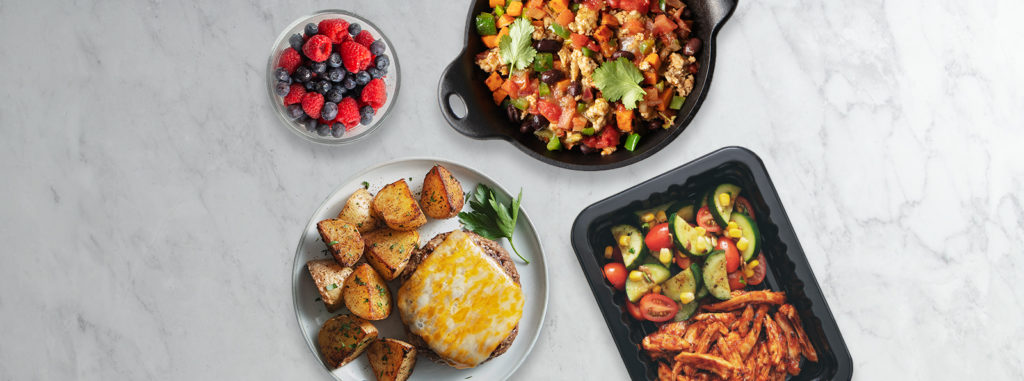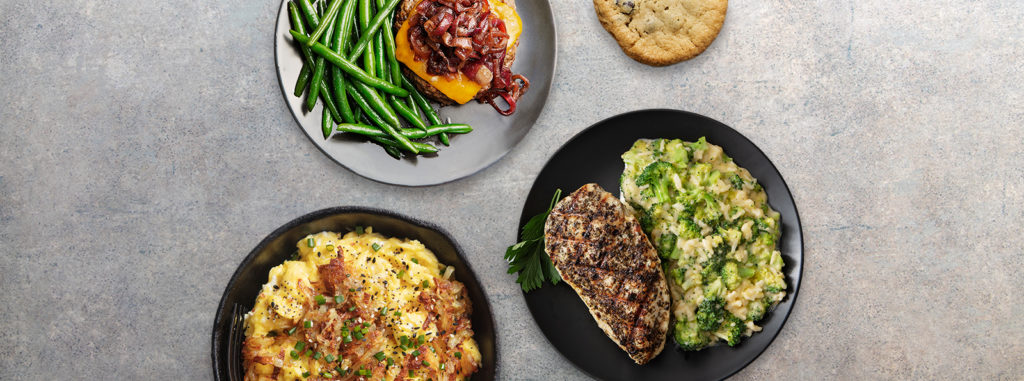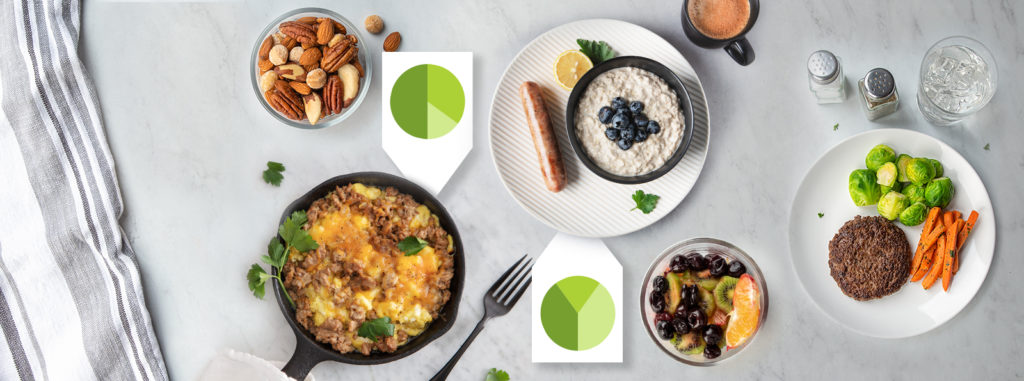Most of us would love to whittle away the stubborn belly fat that circles our waists, either for health reasons or to just feel better about our bodies, but few people understand what it takes to drop excess weight. And it doesn’t matter if you need to lose 10 pounds, or a more daunting amount like 50 pounds, solely pounding out reps in the gym or attacking the treadmill isn’t going to get you to your goal—you must focus your efforts on the calories you are taking in to create a leaner body.
Cut the Crap

Though what foods you buy and put into your body are the key to dropping pounds, it can be tough to sort out how to actually go about it in real life. “The first step is to evaluate your current eating patterns,” says Kim Larson, R.D.N., and health and wellness coach at Total Health in Seattle, WA. “Are there foods that are obviously adding empty calories to your life that you can give up? Things like sugary sodas, drinks, cakes, cookies, candy?”
Take a hard look at where these foods are popping up in your life—or when they are falling into your shopping cart—and eliminate them gradually. Most of these processed foods are full of sugar, which can be addictive, making dropping them cold turkey a struggle, so go slow. Getting rid of as many highly processed foods, packaged foods, junk foods, sugary treats and sweets will go a long way toward nixing excessive amounts of sugar, fat and calories that lead to weight gain and keep the pounds on, says Larson.
Planning balanced meals that include all the food groups and not eliminating any of them and eating at home (where you include mostly whole, minimally processed foods) is an important part of weight loss and weight maintenance, says Larson. It gives you more control over not only your calories, but also added nutrients that your body needs for good health. Completely restricting isn’t always necessary but setting boundaries on junk foods and foods that are simply empty calories is necessary for most people. This is foundational for weight loss. Regular exercise and that means being consistent daily and weekly, will have a profound effect on health and support a healthy weight, as well.
Add the Goods
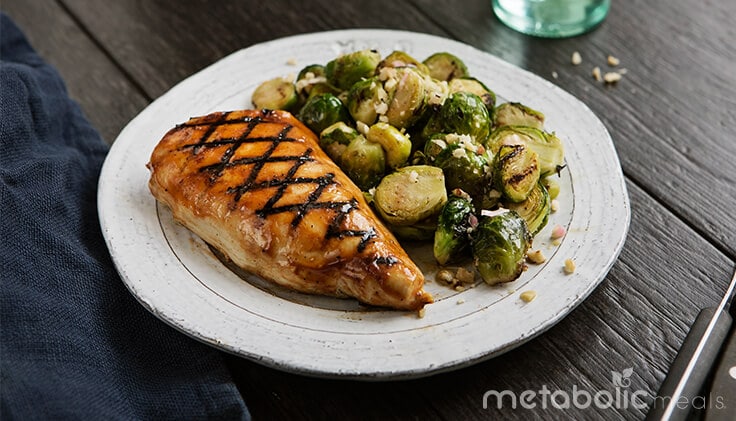
To make it easier for those who want to build a sustainable and healthy meal plan for losing weight, think about adding good things into your daily diet, instead of dwelling on the negatives. “Choose one or two times during the day when you can include eating another fruit or vegetable,” says Larson. “Starting to increase these foods is a step towards lowering calories, improving overall nutrition and keeping the appetite under control.” They are the lynchpins for weight loss and weight maintenance since they are low in calories along with being full of water and fiber, which means you can eat a lot of them.
Speaking of fiber, making sure you are getting loads of it in your diet is another key component to ensuring your weight loss is successful and permanent. “Fiber slows digestion so you have more long-lasting energy throughout the day and you’ll feel more full,” says Larson. Most people only get about 15 grams a day, but try to get about 25 grams for women and 38 grams for men, says the National Academies. Go for the aforementioned fruits and veggies, but also load up on beans and whole grains—top sources include all beans, chickpeas, ancient grains and leafy greens.
Additionally, focus on how much protein you are getting each day. “Every meal should have 20–30 grams of protein distributed throughout the day,” says Larson. “This helps keep lean muscle mass intact because when we lose weight, we can also lose muscle along with fat.” Preserving and maintaining muscle mass is important because it keeps your metabolism roaring while you are dropping calories. Focus on lean, pasture-raised meats, which are lower in saturated fat and calories, like turkey and chicken breast, pork loin, sirloin cuts of beef, and venison or bison. Also, don’t forget to get in wild-caught fish and seafood once or twice a week—salmon, tuna, cod, shrimp, mussels—for a dose of healthy omega 3s and clean protein.
Plan of Attack
Other strategies that should be taken into consideration when planning to battle the bulge include eating regularly and consistently throughout the day. “This helps to keep energy levels high so you can put the effort into exercise,” says Larson, “and also helps control appetite hormones and avoid binging from getting too hungry.”

Adequate sleep is also an important factor in weight loss and general health. The National Sleep Foundation recommends that for adults age 26 to 64, you should get around 7 to 9 hours of restful sleep each night. This ensures that your body has time to fully recovery from any intense exercise and regenerate tissues inflamed by working out, and clears out toxins in your brain and the rest of your body that have built up during the day. There’s also a weight loss component to sleep as studies have shown that getting less than 7 hours can prompt your body to gain weight and store more fat by disturbing the production of hormones.
How Much to Lose
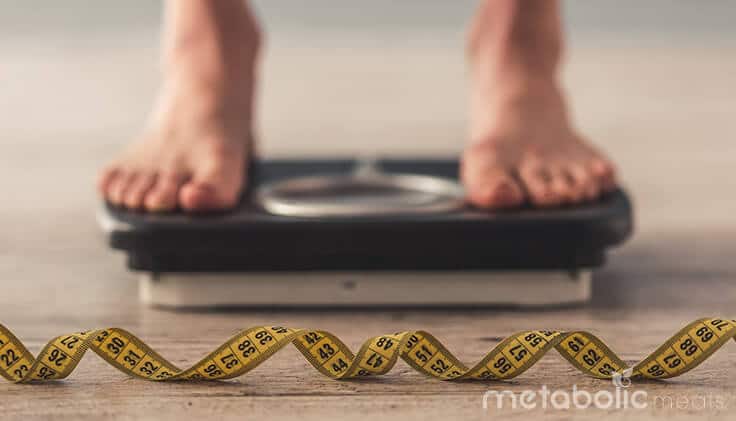
All of that nutrition planning and meal prep can be worthless though if you don’t take the time to figure out how many calories you need to restrict from your diet to start to lose weight. You can calculate your calories need to lose weight by going to supertracker.gov and putting your height, weight and how many pounds you’d like to lose into the calculator to find the amount of calories right for you. “Be aware that slower weight loss is more likely to be permanent,” says Larson. “That means ½-1 pound per week. No more than 2 pounds per week is realistic and again, the slower weight loss means you are actually changing lifestyle behaviors and habits that will not only help you lose weight, but keep it off forever.”
With exception of week 1 and 2, quick weight loss, over 3 pounds a week puts you in a danger zone of quickly regaining later on, says Larson. People who lose weight and regain it, will find it difficult to get back to their resting metabolic rate from before they lost weight. New research shows that dieting can alter your metabolic rate by lowering it, possibly for the rest of your life, which makes it harder to maintain the weight loss once you are at a lower weight.
Once an accurate determination is made about daily calorie needs and macronutrient ratios, it is important to put everything together in a way that fits your lifestyle allowing for consistency, and long-term sustainable results.


